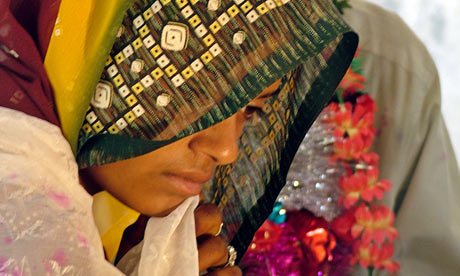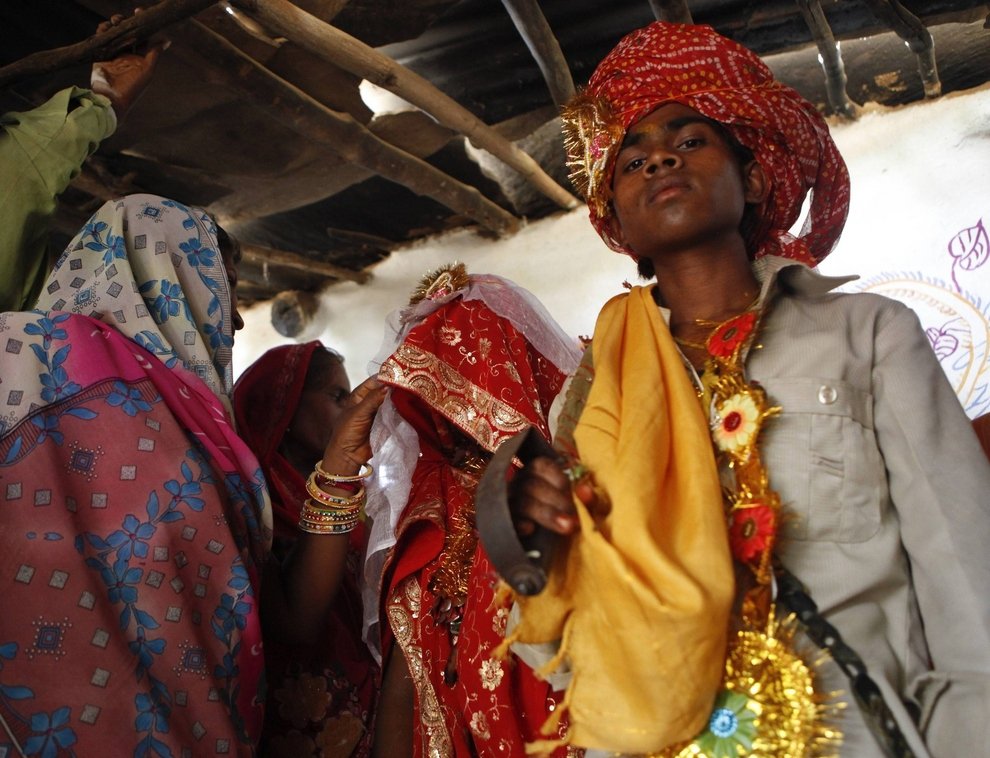What Are Exoplanets And How NASA Detects Life Beyond Our Solar System
Bharti Airtel Set To Acquire Telenor India Within This Year
Google Celebrates NASA’s Discovery Of Seven Earth-Like Planets With An Animated Doodle
Some Home Remedies That Might Sound Bizarre But Actually Work Like A Charm
Akshay Kumar Feels He Has Made Enough Money, Now Wants To Focus On Content & Characters
Delhi ATM Dispenses Fake Rs 2000 Notes From ‘Childrens Bank of India’ With ‘Churan Lable’
Adolf Hitler’s Personal Telephone During World War II Is Up For Auction In The US
From Salman Khan To Rekha, Neil Nitin Mukesh’s Wedding Reception Was Quite A Starry Affair
Despite Being Illegal Child Marriage Is Rampant In India
India has sent a satellite to Mars, but 47% of its girls are married under the age of 18. That's the dichotomy of India. Child marriage is illegal in India according to the Prohibition of Child Marriage Act, 2006, which puts the marriageable age at 21 years in case of male and 18 years in case of a female. Despite the deterrent being rigorous imprisonment up to two years or with fine up to one lakh rupees or with both, child marriage is rampant in India according to a The United Nations Children's Emergency Fund (UNICEF) report titled, 'Reducing Child Marriage in India A Model to Scale up Results'. According to the report, states with the highest prevalence of child marriage are: Bihar (68.2%) Rajasthan (57.6%) Jharkhand (55.7%) Uttar Pradesh (54.9%) West Bengal (54.8%) Madhya Pradesh (53.8%) Andhra Pradesh (51.8%) Karnataka (50.2%) In the above states, more than half the female population under 18 years of age are married.
But why is it still highly prevalent?
As per the report, here are the top six reasons:
It is a widely accepted and sanctioned social norm
Deeply entrenched and widely practiced social customs with wide social approval is a major, often the most critical, driving factor of high prevalence of child marriage.
"This is our Riti Riwaz or customs and traditions which we have inherited since generations" is the common sentiment running though the minds of people who consent to child marriage.
Poverty and high wedding costs
Child marriages are relatively less expensive as lot of the times they are conducted on a mass scale.
The practice of mass child marriages on the ‘auspicious’ days of Akshaya Tritiya and Mahashivrathiri is common in Andhra Pradesh and Rajasthan.
Many times, fathers marry off their daughters as a means of repaying debt
However, poverty cannot be solely attributed as the driving factor. For example, Patan district of Gujarat has a high prevalence of child marriage with 54.2%, but more than 80% of that population is not poor.
Lack of easy access to schooling, especially at secondary level
Lack of schooling facilities, especially class 8 and above, has also been identified as a major factor.
Safety of girls is also a big factor as far as the parents are concerned. In such situations, the location of schools become important.
The chart above emphasises the importance of education in reducing child marriage. Those who pursue higher secondary education and above have a higher probability of avoiding child marriage as compared to those completing only secondary education.
Patriarchal mentality of Indian society
As mentioned earlier, it is essentially the thought that the female gender has an inferior position in society.
Add to that, social customs and beliefs, such as that girls are paraya dhan – someone else’s property – and that their main responsibility is to bear children.
Fear of losing family honour in case of a premarital sexual relationship.
Lack of awareness about the law
A significant proportion of parents are not aware that child marriage is illegal.
However, awareness of the law does not appear to inhibit deeply entrenched social practices.
The existence and awareness of laws does not play a major deterrent.
Lack of political pressure and implementation
Politicians find it difficult to oppose the practice as it may mean losing votes and support.
Enforcement agencies find it difficult to take action against their own political bosses.
Communities practising child marriage are numerically strong and often well organized in the form of caste panchayats and other similar bodies. They form important voting blocks, which influence electoral politics and aim at sustaining the practice.






